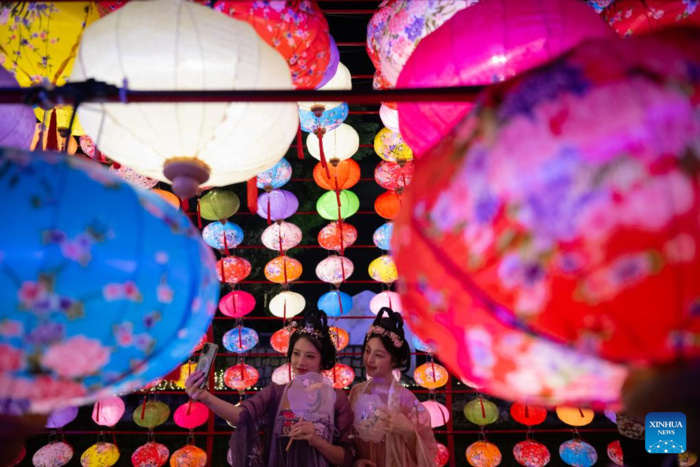China Focus: Children's Literature in Tibetan Language Turns New Page
LHASA, April 23 (Xinhua) — Tashi Wangden, 8, quietly looked through a Chinese-Tibetan comic strip at a bookstore behind the iconic Potala Palace in Lhasa, capital city of southwest China's Tibet Autonomous Region.
With vivid images and bilingual words below in the "Journey to the West," a classic Chinese fiction, Tashi Wangden was fascinated by the clever and plucky Monkey King in the comic.
The comic is among several children's bilingual comic strips co-published by the Tibet People's Publishing House and a Shanghai-based publisher, with the support of a special national fund for ethnic language publications since 2016.
"The comic books are popular among local children and grassroots farmers and herdsmen in Tibet, and most of the books have been reprinted in a short time," said Tsering Dorje from the publishing house.
Saturday marks the World Book Day. As China has been promoting ethnic language publications, Tibetan children on the plateau have a wide choice of books in the Tibetan language.
In old Tibet, rare Buddhist classics and other printed materials were mainly limited to officials, nobles, and educated lamas in monasteries. Some seven decades ago, there was not a single proper school back then, and the illiteracy rate exceeded 95 percent.
Thanks to the peaceful liberation of Tibet in 1951, children from different ethnic groups on the plateau began to go to school, and Tibetan children's literature has developed rapidly.
Chinese and foreign children's books, such as "One Hundred Thousand Whys," "Grimms' Fairy Tales," and "Andersen's Fairy Tales," have been translated into Tibetan and other ethnic minority languages and published since the 1960s.
Official figures released at the end of 2021 showed that more than 2,500 Tibetan-language books had been published in the region over the previous five years.
If you set foot in bookstores and libraries in Lhasa, you would not be surprised to find many world-famous picture books in Chinese, Tibetan, and English, which can open a door for local children to the outside world.
Tibet now has 5,462 rural libraries, 1,787 temple libraries and over 200 publishers, said the latest official data.
"We will cultivate more local writers and translators, and strengthen efforts to compile and create more books on excellent traditional Tibetan culture," said Tsering Dorje.
(Source: Xinhua)
Please understand that womenofchina.cn,a non-profit, information-communication website, cannot reach every writer before using articles and images. For copyright issues, please contact us by emailing: website@womenofchina.cn. The articles published and opinions expressed on this website represent the opinions of writers and are not necessarily shared by womenofchina.cn.






.jpg)

 WeChat
WeChat Weibo
Weibo 京公网安备 11010102004314号
京公网安备 11010102004314号